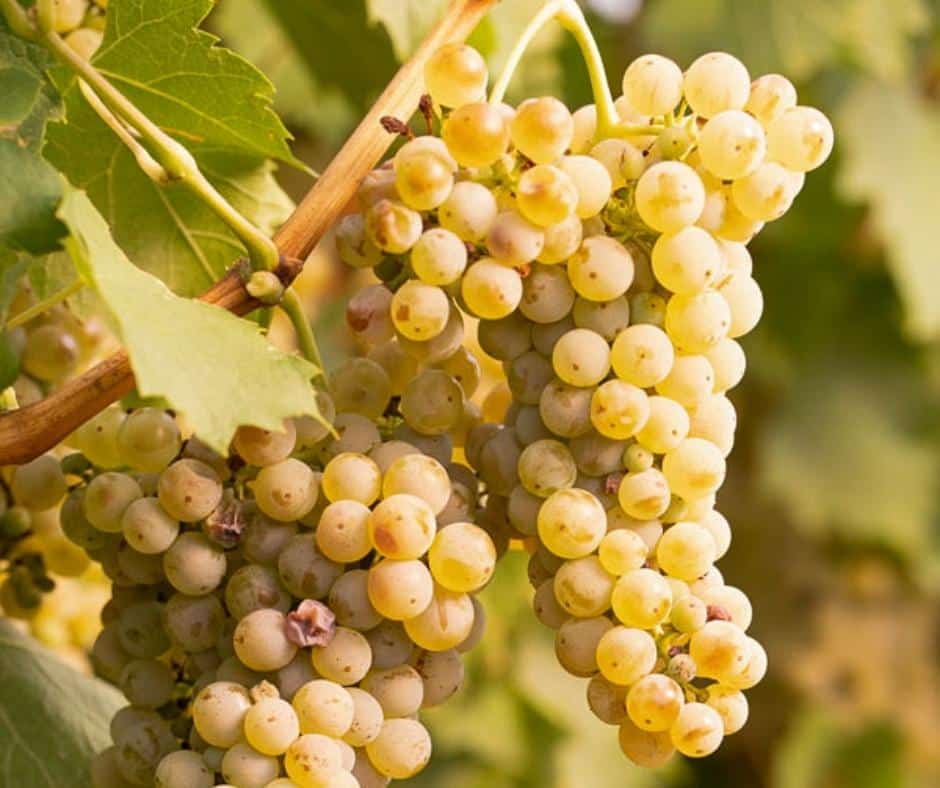Romania is the largest grower of the Riesling italian grapevine variety, 6,963.58 ha (2022). However, it rarely capitalizes on this advantage by giving credit to the wine grape variety to exhibit its full potential.
Where does the name Riesling’ come from?
Research is still being done on the origin and etymology of the name Riesling. A research professor from Leipzig issues several hypotheses [1]: the bark of the perennial wood of the Riesling variety shows many exfoliations (breaks/ ruptures), and ‘Riss’ (germ.) means ‘rupture’.
Another hypothesis would be the susceptibility of flowers to abort if low temperatures occur during flowering, in German ‘verrieseln’. It would also be possible that ‘rußling’ comes from the dark color of perennial wood, ‘ruß’ meaning soot, so ‘black’. A final connotation would come from the high acidity, which brings to the taste the feeling of a mountain spring, with its cold, comforting water, which means ‘rieseln’.
With the invaluable help of a native German-speaking friend, I found out one more possibility put forward by Professor Udolph [1]: around 1565, the name of the variety was ‘rußling’, which may come from the fact that when ripen, on black dots appear on the grape berries (like apple scab disease) and when overripe the grape berries become almost brown.
Why are the two varieties confused?
In Romanian legislation, there is the notion of varietal Riesling , which includes Riesling italian and Riesling de Rhin, as if they were from the same family of Rieslings. The same is the case with varietal Cabernet, which includes Cabernet Sauvignon and Cabernet franc (about which it is worth talking about separately!).
This is totally inappropriate, because there is no relationship between the two varieties. Microsatellite analysis by molecular markers has amply proved this
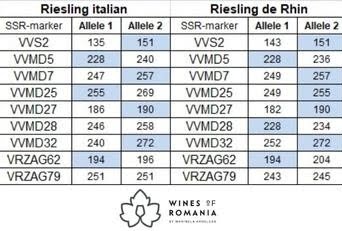
The genetic comparison between the two grapevine varieties, according to VIVC
However, how did this inclusion in a theoretical group appear and then the transposition into practice through the planting programs of the last fifteen years? After the 90s, the bibliographic material used in profile research in Romania comes predominantly from the French school of viticulture (before 1989, it was mostly in Russian).
If we only look at the synonyms of the two grapevine varieties, admitted for labeling in France, which by far is an significant grower of the Riesling de Rhin, we find in both: Riesling blanc, Petit riesling. Therefore, if the French do not make the difference, why would we? It is not much easier to do like them and not to look behind, in the Romanian Ampelografia [2], the master book of the Romanian winegrowers, admired as a work by the great ampelographers of the world.
The French mention, however, a synonym for Riesling de Rhin, which brings it to its place: Gentil aromatique. Along with the German Gewurztraube , we can deduce the aromatic character of the variety, compared to the almost neutral one of the Riesling-ului italian.
Students at WSET learn that Riesling is only called Riesling de Rhin, and if they want to refer to Riesling italian: "It is worth pointing out that there are other varieties with similar names. The most common is Welschriesling/ Laski Rizling/ Olaszrizling. This is a totally unrelated Rieslinger variety, it is widely grown in Central and Eastern Europe for crisp, light, dry whites and few luscious sweet wines." [3]
Riesling italian
Romania is the largest grower of the Riesling italian grapevine variety, 6,963.58 ha (2022). However, it rarely capitalizes on this advantage by giving credit to the wine grape variety to exhibit its full potential.
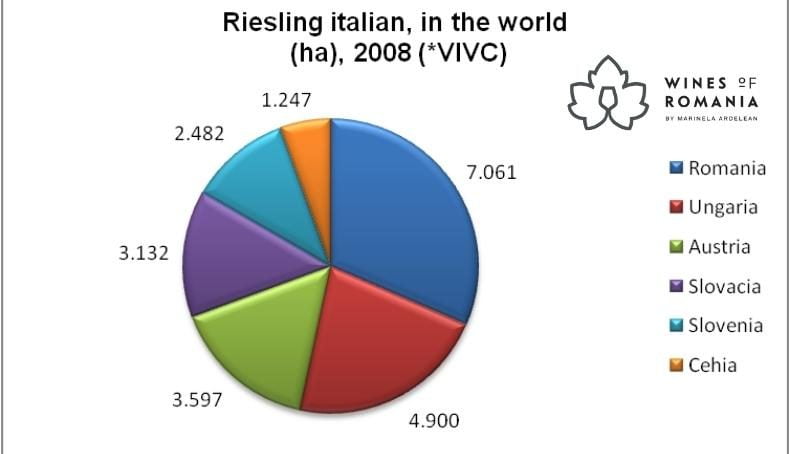
Riesling italian is grown especially in the eastern and southeastern counties of Romania, with an enclave in the Transylvanian Plateau. Otherwise, it is cultivated in 34 counties, the largest area being in Vrancea – 1,639.55 ha, and the smallest in Neamt – 0.08 ha.
We find it in all areas with controlled designation of origin, with the exception of PDO Adamclisi and PDO Cotnari. It produces from 10,000 kg/ha to 19,000 kg/ha in PDO Odobesti and PDO Panciu.
Riesling de Rhin
Germany is the largest grower of Riesling de Rhin. The variety found its second home in Australia, surpassing the French Alsace.
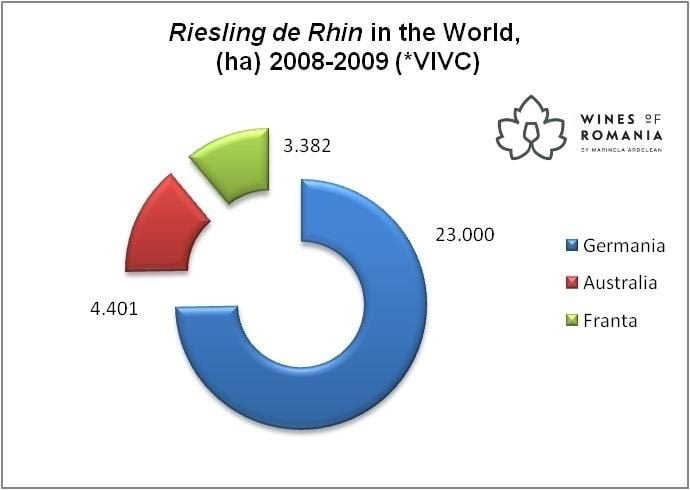
Although the official name of the variety is Riesling de Rhin, many producers write ‘Riesling de Rin’, which is not correct, because not even in the official catalog (OIV 2013) – no. 2953, neither in Romanian legislation, nor even in the list of synonyms mentioned by ampelographers or in the VIVC catalog does it exist in this form. Just as the names of Romanian varieties are not translated into another language, we should not translate their names from the original language either. It would be very difficult for us to understand if we found ‘Sardonei’ or ‘Sovinion’ on the labels of Chardonnay or Sauvignon wines.
Riesling de Rhin is grown especially in the western counties of Romania, in the Transylvanian Plateau, but we also find it substantially in Vrancea and Vaslui. It is cultivated in 14 counties, the largest area being found in Vaslui – 126.68 ha, and the smallest in Olt – 0.22 ha.
Riesling de Rhin is grown in 18 of the 34 PDOs in Romania: Aiud, Banat, Cotesti, Crisana, Dealu Mare, Husi, Iasi, Insuratei, Jidvei, Minis, Murfatlar, Odobesti, Panciu, Recas, Sarica-Niculitel, Sebes-Apold , Segarcea, Tarnave. It produces from 8,000 kg/ha in PDO Sebes-Apold, up to 16,500 kg/ha in PDO Odobesti or PDO Panciu.
The resistance to gray rot makes it susceptible to the appearance of the conidial form B.fuckeliana, that causes noble rot, from the grapes affected in this way, with concentrated sugars and sustained acidity, resulting in sweet luscious wines, of great finesse and rarity. And their price is commensurate with the effort to produce them.
Riesling de Rhin wine has varietal character if it is grown in conditions similar to the Mosel, Rheingau, German Pfalz regions or French Alsace. The slight hint of hydrocarbons and the minerality of those wines can sometimes be found in Transylvania, in the wines that come from grapes picked from slopes with northern exposure, on skeletal soils with high permeability.
Did you know that the wines that accompanied the dishes served on board the LZ 129 Hindenburg airship, which was destroyed by fire in 1937, were mostly great wines of the Riesling de Rhinwine grape variety, produced by famous wineries, from late-harvested grapes?
Distribution by county, in Romania
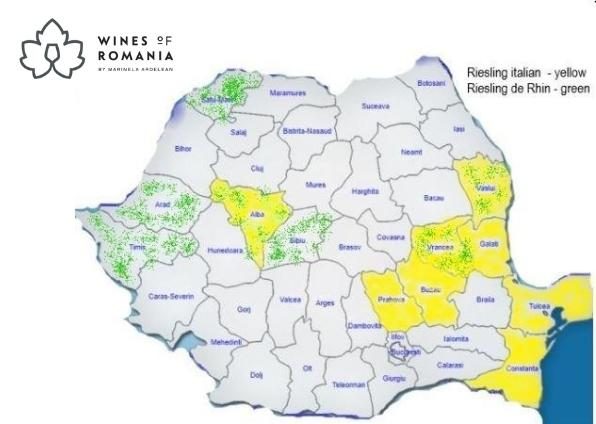
Riesling italian versus Riesling de Rhin, in technical terms
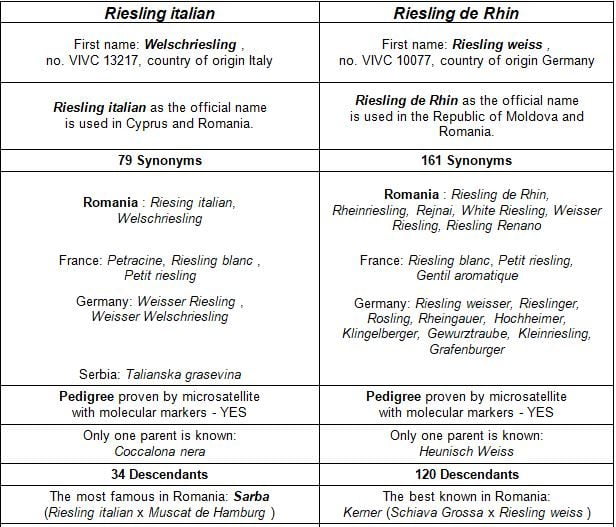
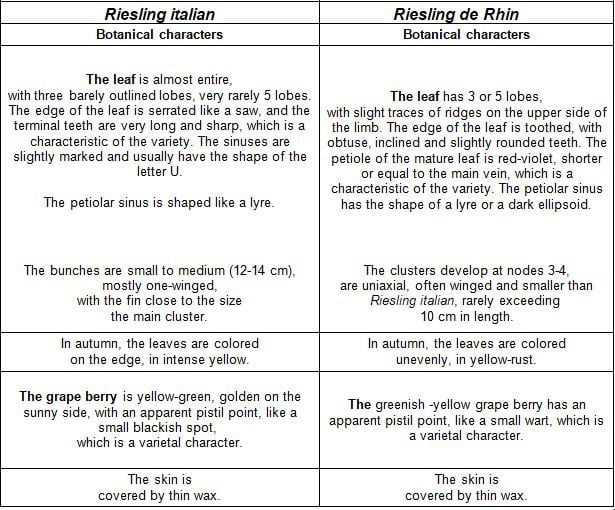
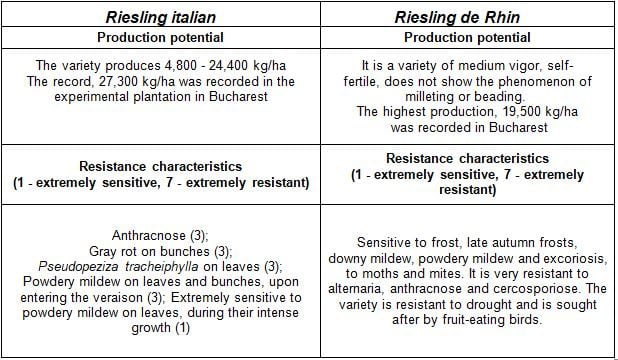
Wines recommended by Wines of Romania
- Jidvei Owner’s Choice Maria Riesling 2021
- Domeniul Bogdan Patrar Riesling 2019
Sources:
[1] Jürgen Udolph – Woher hat der Riesling seinen Namen? Göttingen/Leipzig, 2015 https://www.prof-udolph.com/fileadmin/user_upload/Riesling-Etymologie.pdf
[2] Ampelografia Romaniei, vol III, pg. 425 si pg 455
[3] Wines and Spirits – Looking behind the label, produced and published by Wine & Spirits Education and Trust, 2014, pg.46

